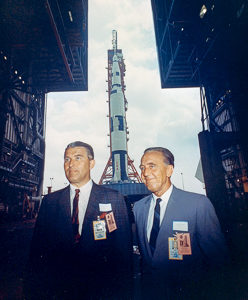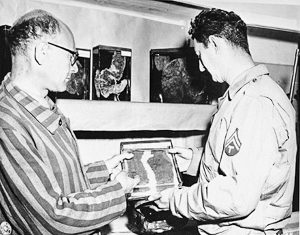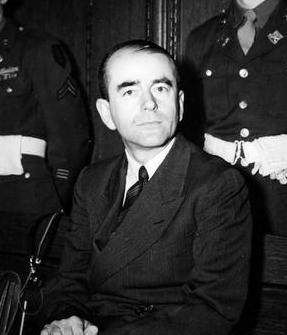One of the byproducts of doing research for my next two books, Where Did They Put the Gestapo Headquarters? A Walking Tour of Nazi Occupied Paris, is learning how many war criminals (Nazi as well as collaborators) were either never brought to justice or received relatively light sentences compared to the enormity of their crimes. Underground rat lines (click here to read Odessa: Myth or Truth) provided notorious Nazis with escape routes to South America. Protection was offered to some by Catholic Church officials. Many escaped during the chaos at the end of the war and returned to Germany to live out their remaining lives under either their given or assumed names. Politicians and government officials pardoned many of them after their convictions. However, it was only after 1998 that we became fully aware of the American, British, and Soviet recruitment of former Nazi scientists, engineers, and doctors during the immediate aftermath of the war. The American efforts were known as Operation Paperclip while the Soviet counterpart was Operation Osoaviakhim.

Did you Know?
Did you know the U.S. Government began declassifying World War II documents in the 1960s? However, it wasn’t until 1998 when President Clinton signed into law the Nazi War Crimes Disclosure Act that historians began to fully understand the involvement of the Allies in protecting certain Nazis who were clearly either directly or indirectly responsible for war crimes including crimes against humanity. The purpose of the act and its “Interagency Working Group” (IWG) was to fully disclose the remaining millions of pages of classified documents pertaining to war crimes committed by the Nazis and the Japanese. One of the results was the complete declassification of OSS documents (the OSS was the wartime American intelligence agency that morphed into the CIA after the war). The IWG also disclosed the involvement of the former Allied governments (United States, Britain, and the Soviet Union) in a post-war competition to see which country could recruit the most valuable Nazi scientists, engineers, technicians, and doctors. In all, the United States recruited more than 1,600 former Nazis while the Soviet Union forcibly recruited more than 2,200.
Subsequent Nuremberg Trials
After the first Nuremberg trial was finished (click here to read Court Room 600), some of the most ruthless and complicit Nazis captured by the Allies were tried in twelve Nuremberg follow-up trials for war crimes and crimes against humanity. Convicted defendants received prison sentences or were sentenced to death. However, in many cases, death verdicts were eventually reduced to life imprisonment and finally, to shorter and finite prison terms. Some were even given full pardons. By the mid-1950s, with the exception of the original Nuremberg prisoners in Spandau Prison, all imprisoned Nazis had been released including ten SS officers convicted and sentenced to death for their participation in the Einsatzgruppen (mobile SS death squads). Two men recruited by Operation Paperclip, Kurt Blome and Otto Ambros, went to trial. Included in the Doctors’ Trial (Case 1) was Dr. Blome, responsible for all Nazi biological warfare research while Ambros was a defendant in the I.G. Farben Trial (Case 6). We will meet both of these men later.

From the end of the war to around 1959, there were several categories of ex-Nazis who hid from justice with the assistance of the United States government. They included the scientists and engineers who worked on the development of V-2 rockets in Peenemünde and later, Nordhausen-Mittlewerk-Dora as well as the doctors who developed biological germ warfare. Read More “Hang ‘Em or Hire ‘Em”


